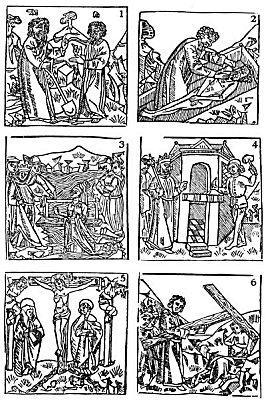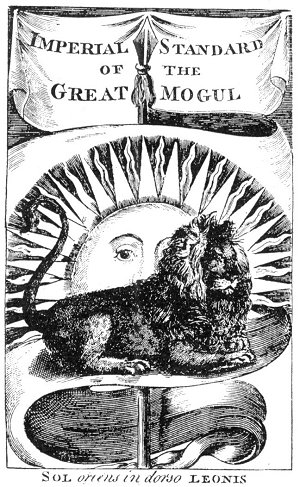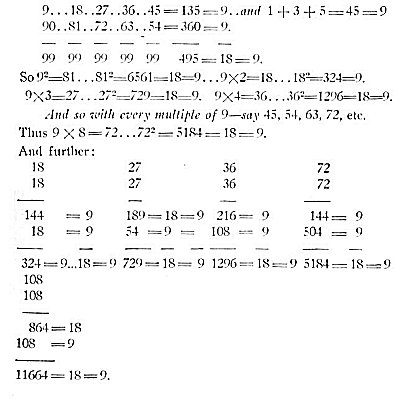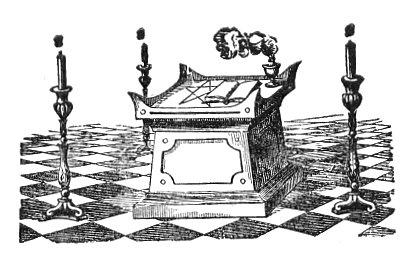The first way — that of explaining it by physical, though occult causes, is the one adopted by the Pierart school of mesmerism. It is certainly not the spiritualists who have a right to doubt the plausibility of this explanation. The second plan is that adopted by scientists and skeptics. They deny point-blank. As des Mousseaux remarks, there is no better or surer way, and none exacts less of either philosophy or science.
The spectre of a village herdsman, near Kodom, in Bavaria, began appearing to several inhabitants of the place, and either in consequence of their fright or some other cause, every one of them died during the following week. Driven to despair, the peasants disinterred the corpse, and pinned it to the ground with a long stake. The same night he appeared again, plunging people into convulsions of fright, and suffocating several of them. Then the village authorities delivered the body into the hands of the executioner, who carried it to a neighboring field and burned it. “The corpse,” says des Mousseaux, quoting Dom Calmet, “howled like a madman, kicking and tearing as if he had been alive. When he was
Page 452
run through again with sharp-pointed stakes, he uttered piercing cries, and vomited masses of crimson blood. The apparitions of this spectre ceased only after the corpse had been reduced to ashes.”
Officers of justice visited the places said to be so haunted; the bodies were exhumed, and in nearly every case it was observed that the corpse suspected of vampirism looked healthy and rosy, and the flesh was in no way decaying. The objects which had belonged to these ghosts were observed moving about the house without any one touching them. But the legal authorities generally refused to resort to cremation and beheading before they had observed the strictest rules of legal procedure. Witnesses were summoned to appear, and evidence was heard and carefully weighed. After that the exhumed corpses were examined; and if they exhibited the unequivocal and characteristic signs of vampirism,
they were handed over to the executioner.
“But,” argues Dom Calmet, “the principal difficulty consists in learning how these vampires can quit their tombs, and how they reenter them, without appearing to have disturbed the earth in the least; how is it that they are seen with their usual clothing; how can they go about, and walk, and eat? . . . If this is all imagination on the part of those who believe themselves molested by such vampires, how happens it that the accused ghosts are subsequently found in their graves . . . exhibiting no signs of decay, full of blood, supple and fresh? How explain the cause of their feet found muddy and covered with dirt on the day following the night they had appeared and frightened their neighbors, while nothing of the sort was ever found on other corpses buried in the same cemetery? How is it again that once burned they never reappear? and that these cases should happen so often in this country that it is found impossible to cure people from this prejudice; for, instead of being destroyed, daily experience only fortifies the superstition in the people, and increases belief in it.”
There is a phenomenon in nature unknown, and therefore rejected by physiology and psychology in our age of unbelief. This phenomenon is a state of half-death. Virtually, the body is dead; and, in cases of persons in whom matter does not predominate over spirit and wickedness not so great as to destroy spirituality, if left alone, their astral soul will disengage itself by gradual efforts, and, when the last link is broken,
Page 453
it finds itself separated forever from its earthly body. Equal magnetic polarity will violently repulse the ethereal man from the decaying organic mass. The whole difficulty lies in that 1, the ultimate moment of separation between the two is believed to be that when the body is declared dead by science; and 2, a prevailing unbelief in the existence of either soul or spirit in man, by the same science.
Pierart tries to demonstrate that in every case it is dangerous to bury people too soon, even though the body may show undoubted signs of putrefaction. “Poor dead cataleptics,” says the doctor, “buried as if quite dead, in cold and dry spots where morbid causes are incapable to effect the destruction of their bodies, their (astral) spirit enveloping itself with a fluidic body (ethereal) is prompted to quit the precincts of its tomb, and to exercise on living beings acts peculiar to physical life, especially that of nutrition, the result of which, by a mysterious link between soul and body, which spiritualistic science

Moe is the founder of GnosticWarrior.com. He is a father, husband, author, martial arts black belt, and an expert in Gnosticism, the occult, and esotericism.





